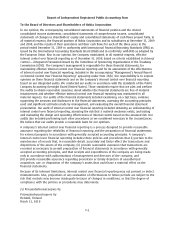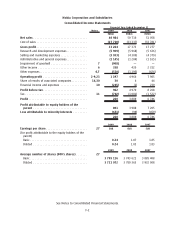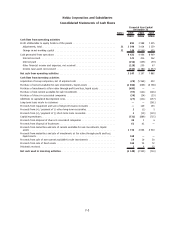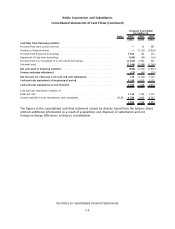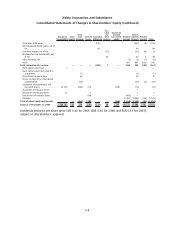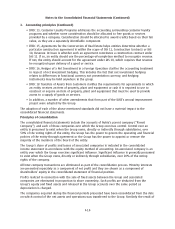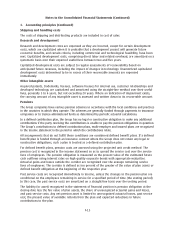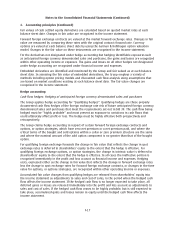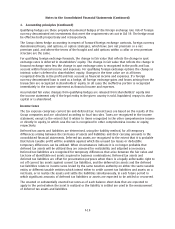Nokia 2009 Annual Report Download - page 185
Download and view the complete annual report
Please find page 185 of the 2009 Nokia annual report below. You can navigate through the pages in the report by either clicking on the pages listed below, or by using the keyword search tool below to find specific information within the annual report.1. Accounting principles (Continued)
a Group company divested during an accounting period is included in the Group accounts only to the
date of disposal.
Business Combinations
The purchase method of accounting is used to account for acquisitions of separate entities or
businesses by the Group. The cost of an acquisition is measured as the aggregate of the fair values at
the date of exchange of the assets given, liabilities incurred, equity instruments issued and costs
directly attributable to the acquisition. Identifiable assets, liabilities and contingent liabilities
acquired or assumed by the Group are measured separately at their fair value as of the acquisition
date. The excess of the cost of the acquisition over the Group’s interest in the fair value of the
identifiable net assets acquired is recorded as goodwill.
Assessment of the recoverability of longlived and intangible assets and goodwill
For the purposes of impairment testing, goodwill is allocated to cashgenerating units that are
expected to benefit from the synergies of the acquisition in which the goodwill arose.
The Group assesses the carrying amount of goodwill annually or more frequently if events or changes
in circumstances indicate that such carrying amount may not be recoverable. The Group assesses the
carrying amount of identifiable intangible assets and longlived assets if events or changes in
circumstances indicate that such carrying amount may not be recoverable. Factors that trigger an
impairment review include underperformance relative to historical or projected future results,
significant changes in the manner of the use of the acquired assets or the strategy for the overall
business and significant negative industry or economic trends.
The Group conducts its impairment testing by determining the recoverable amount for the asset or
cashgenerating unit. The recoverable amount of an asset or a cashgenerating unit is the higher of
its fair value less costs to sell and its value in use. The recoverable amount is then compared to its
carrying amount and an impairment loss is recognized if the recoverable amount is less than the
carrying amount. Impairment losses are recognized immediately in the profit and loss account.
Foreign currency translation
Functional and presentation currency
The financial statements of all Group entities are measured using the currency of the primary
economic environment in which the entity operates (functional currency). The consolidated financial
statements are presented in Euro, which is the functional and presentation currency of the Parent
Company.
Transactions in foreign currencies
Transactions in foreign currencies are recorded at the rates of exchange prevailing at the dates of the
individual transactions. For practical reasons, a rate that approximates the actual rate at the date of
the transaction is often used. At the end of the accounting period, the unsettled balances on foreign
currency assets and liabilities are valued at the rates of exchange prevailing at the yearend. Foreign
exchange gains and losses arising from statement of financial position items, as well as fair value
changes in the related hedging instruments, are reported in financial income and expenses. For non
monetary items, such as shares, the unrealized foreign exchange gains and losses are recognized in
the other comprehensive income.
F11
Notes to the Consolidated Financial Statements (Continued)


